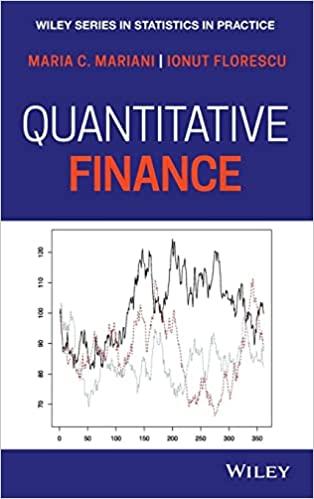In a market with (N) securities and (M) futures, where (left(S_{1}, cdots, S_{N} ight)) is the present
Question:
In a market with \(N\) securities and \(M\) futures, where \(\left(S_{1}, \cdots, S_{N}\right)\) is the present values vector and \(\left(S_{1}^{j}(T), \cdots, S_{N}^{j}(T)\right)\) the future values vector \((j=\) \(1, \cdots, M)\), we say that a portfolio \(\pi=\left(\pi_{1}, \cdots, \pi_{N}\right)\) produces strict arbitrage if one of the following conditions hold:
i) \(\pi \cdot S<0\) and \(\pi \cdot S^{j}(T) \geq 0\) for all \(j=1, \cdots, M\).
ii) \(\pi . S=0\) and \(\pi \cdot S^{j}(T)>0\) for all \(j=1, \cdots, M\).
If \(R\) is the risk-free interest rate, prove that the following statements are equivalent:
(a) There exists a portfolio that produces strict arbitrage.
(b) There exists a portfolio satisfying (i).
(c) There exists a portfolio satisfying (ii).
Step by Step Answer:

Quantitative Finance
ISBN: 9781118629956
1st Edition
Authors: Maria Cristina Mariani, Ionut Florescu





